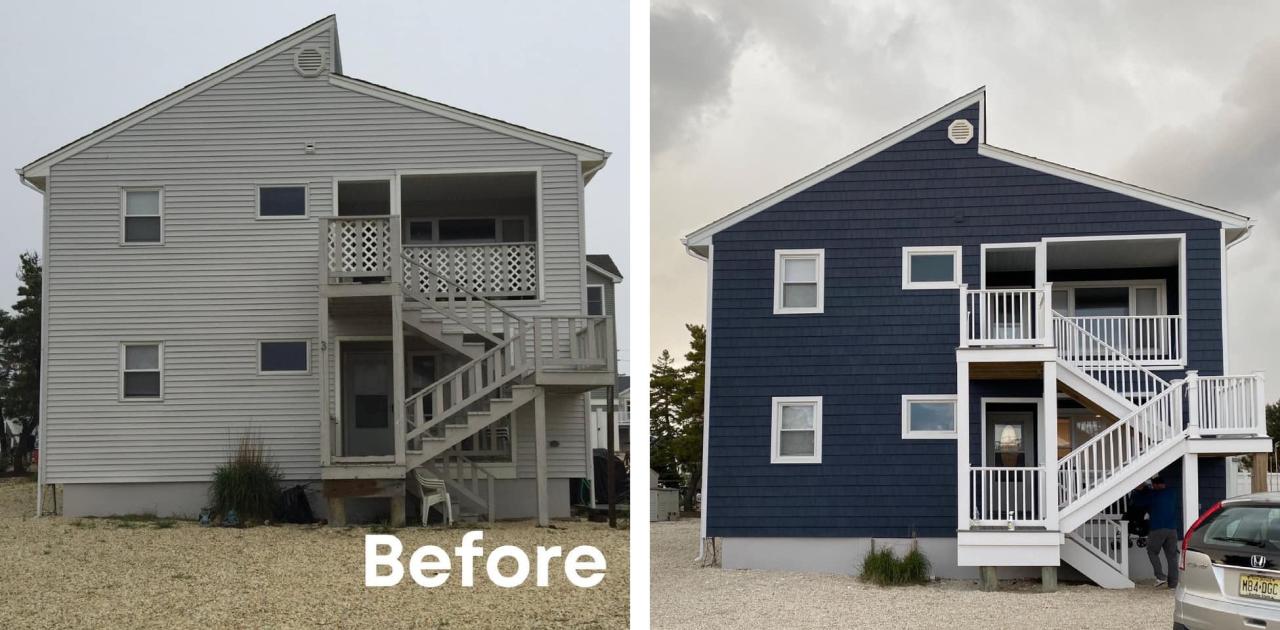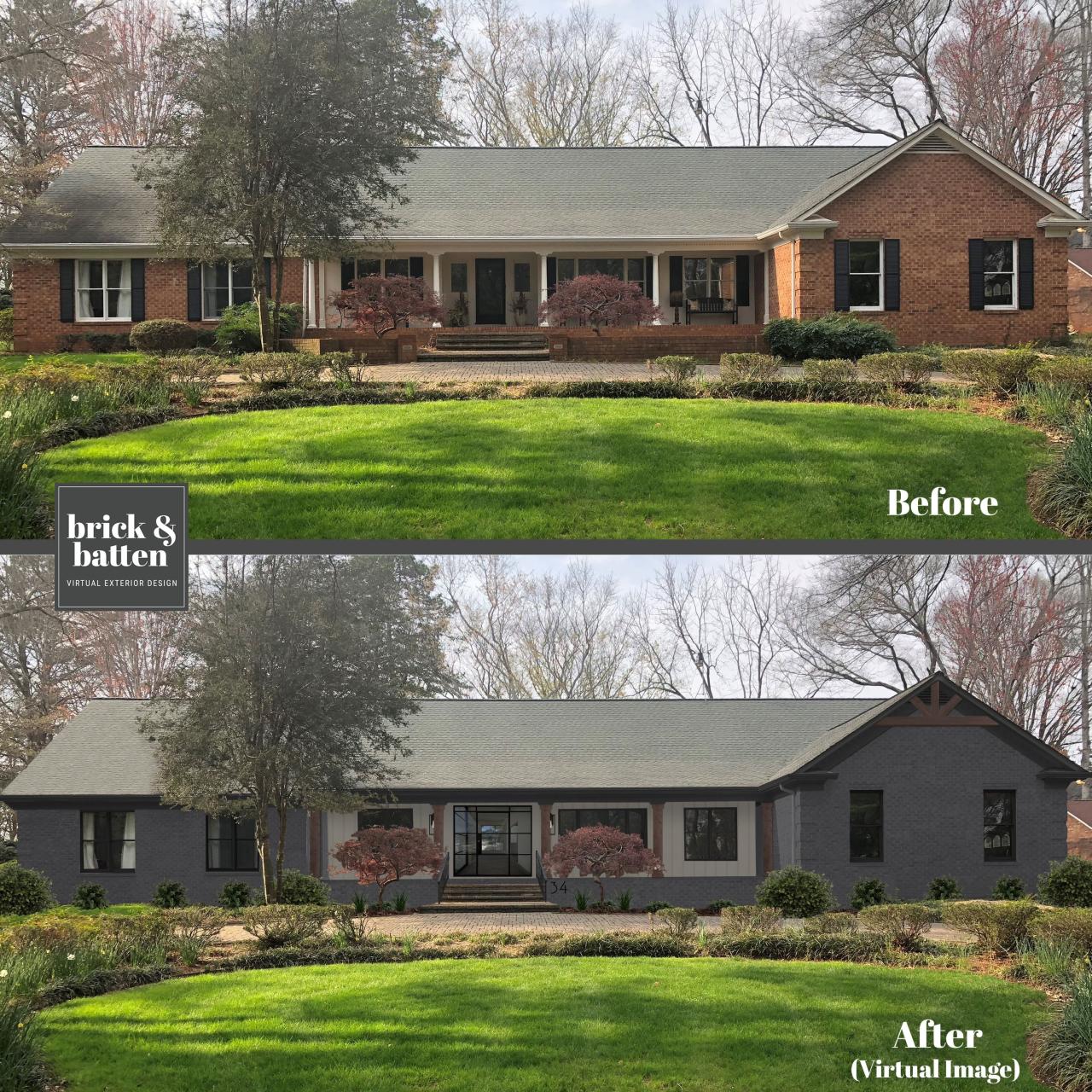Redo Siding on House: A Comprehensive Guide to Revamping Your Homes Exterior
Embark on a journey to transform the look of your home with our guide on redoing siding. From choosing the right materials to finishing touches, we've got you covered every step of the way.
Preparation for Redoing Siding

Before embarking on redoing the siding of your house, there are crucial steps to take in order to ensure a successful and safe project.
Essential Tools and Materials
- Siding materials (vinyl, wood, fiber cement, etc.)
- Hammer
- Nails or screws
- Tape measure
- Level
- Circular saw or utility knife
- Safety goggles and gloves
Inspecting Current Siding
Before starting the redo, it is essential to inspect the current siding to identify any damage, rot, or mold that may need to be addressed. This inspection will help in determining the extent of the work required and the materials needed for the project.
Preparing the Work Area and Ensuring Safety Measures
- Clear the work area of any obstacles or debris to provide a safe and clean space for the project.
- Use appropriate safety gear such as goggles and gloves to protect yourself from any potential hazards.
- Ensure that ladders are stable and secure before climbing up to work on the siding.
- Follow manufacturer's instructions and safety precautions when using tools and materials.
Choosing the Right Siding Materials
When it comes to redoing the siding on your house, selecting the right materials is crucial to ensuring durability, aesthetics, and maintenance ease. There are various siding options available in the market, each with its unique characteristics and benefits.
Vinyl Siding
- Pros:
- Cost-effective
- Low maintenance
- Wide range of colors and styles
- Cons:
- Prone to cracking and fading over time
- Not as environmentally friendly as other options
Wood Siding
- Pros:
- Natural and timeless look
- Can be easily painted or stained
- Eco-friendly option
- Cons:
- Requires regular maintenance like painting or sealing
- Prone to rot, pests, and warping
Fiber Cement Siding
- Pros:
- Durable and long-lasting
- Resistant to rot, fire, and pests
- Limited maintenance required
- Cons:
- Higher initial cost compared to other options
- Heavy and may require professional installation
Metal Siding
- Pros:
- Extremely durable and weather-resistant
- Modern and industrial aesthetic
- Recyclable and eco-friendly
- Cons:
- Can be noisy during heavy rain or hail
- May dent or scratch easily
Removing Old Siding

Removing the old siding is a crucial step in the process of redoing the siding on your house. It is important to do this carefully and efficiently to ensure a smooth transition to the new siding.
Step-by-step Process
- Start by inspecting the existing siding for any damage or areas that may need special attention.
- Remove any fixtures or trim attached to the siding, such as lights, downspouts, or shutters.
- Use a pry bar and hammer to carefully loosen and remove the siding panels. Work from the top down to prevent any damage to the underlying structure.
- Dispose of the old siding responsibly, following local regulations for waste disposal.
Tips for Safe and Efficient Removal
- Wear appropriate safety gear, including gloves and eye protection, to protect yourself from any debris or sharp edges.
- Work methodically and avoid rushing the process to prevent accidents or damage to the house.
- Consider using a siding removal tool or zip tool to make the process easier and faster.
- Have a plan for waste disposal in place before starting the removal to avoid any delays or issues.
Overcoming Challenges
- If you encounter stubborn nails or screws holding the siding in place, use a reciprocating saw or drill to carefully remove them.
- Address any water damage or mold growth found under the old siding before installing the new siding to prevent future issues.
- Take your time to ensure all the old siding is removed completely, as any leftover pieces can affect the installation of the new siding.
Installing New Siding

When it comes to installing new siding on your house, it is crucial to follow the correct process to ensure a professional finish that will enhance the appearance and durability of your home.Properly measuring and cutting the new siding is essential to ensure a precise fit and a seamless look.
Careful attention to detail during this step will help avoid any gaps or uneven edges that could compromise the overall appearance of the siding.
Securing the Siding in Place
- Start by attaching the first piece of siding at the bottom of the wall, ensuring it is level and securely fastened.
- Use appropriate nails or screws recommended by the siding manufacturer to secure each piece in place.
- Overlap each piece of siding according to the manufacturer's instructions to create a weatherproof barrier.
- Make sure to leave a small gap at the end of each piece to allow for expansion and contraction with temperature changes.
Finishing Touches and Maintenance
After installing new siding, it is crucial to focus on the finishing touches to ensure a polished look and to maintain the siding for longevity. Proper maintenance is key to preserving the beauty and functionality of your newly redone siding.
Painting and Sealing
- Once the new siding is installed, consider painting or sealing it to provide an extra layer of protection against the elements.
- Choose high-quality paint or sealant that is specifically designed for the type of siding material you have chosen.
- Regularly inspect the paint or sealant for any signs of wear and tear, and touch up as needed to prevent moisture penetration.
Cleaning and Inspecting
- Regularly clean your siding to remove dirt, debris, and mildew that can accumulate over time.
- Use a gentle cleaning solution and a soft brush or cloth to avoid damaging the siding surface.
- Inspect the siding for any signs of damage, such as cracks, warping, or loose panels, and address them promptly to prevent further issues.
Common Issues and Solutions
- Mold and Mildew: If you notice mold or mildew growth on your siding, clean it with a mixture of water and mild detergent, or use a specialized cleaner. Ensure proper ventilation to prevent future growth.
- Warping or Buckling: Warping or buckling may occur due to improper installation or exposure to extreme weather conditions. Consult a professional to assess the issue and make necessary repairs.
- Fading Color: Over time, the color of your siding may fade due to sun exposure. Consider repainting or staining the siding to refresh its appearance and protect it from UV damage.
Epilogue
In conclusion, redoing the siding on your house can breathe new life into your home's exterior. With the right materials and techniques, you can achieve a fresh and stylish look that will last for years to come.
FAQ Section
What tools and materials are essential for redoing siding?
Common tools include a hammer, nails, tape measure, and a circular saw. Materials needed are siding panels, trim pieces, and caulking.
How do I maintain newly redone siding?
Regularly clean the siding with a mild detergent and water, inspect for any damage, and repaint or seal as needed to maintain its appearance and longevity.
What are the factors to consider when choosing siding materials?
Consider factors like durability, cost, maintenance requirements, and the overall aesthetic appeal of the siding material to make an informed decision.
What are the common challenges during the removal of old siding?
Challenges may include stubborn nails, water damage, or mold growth. Proper tools and techniques can help overcome these challenges effectively.




